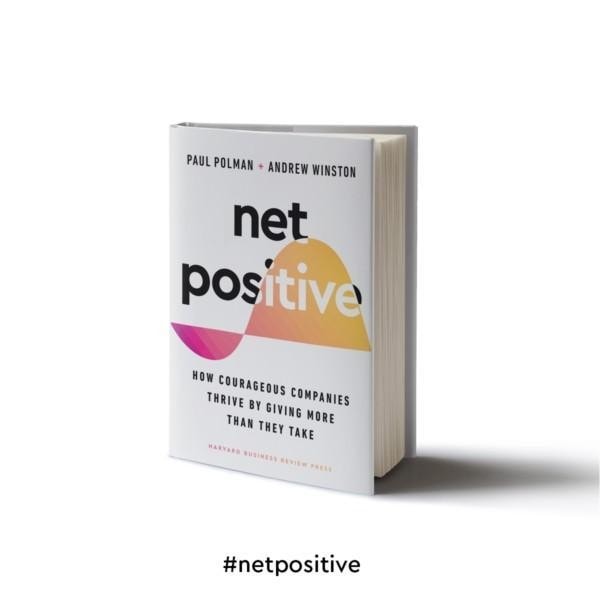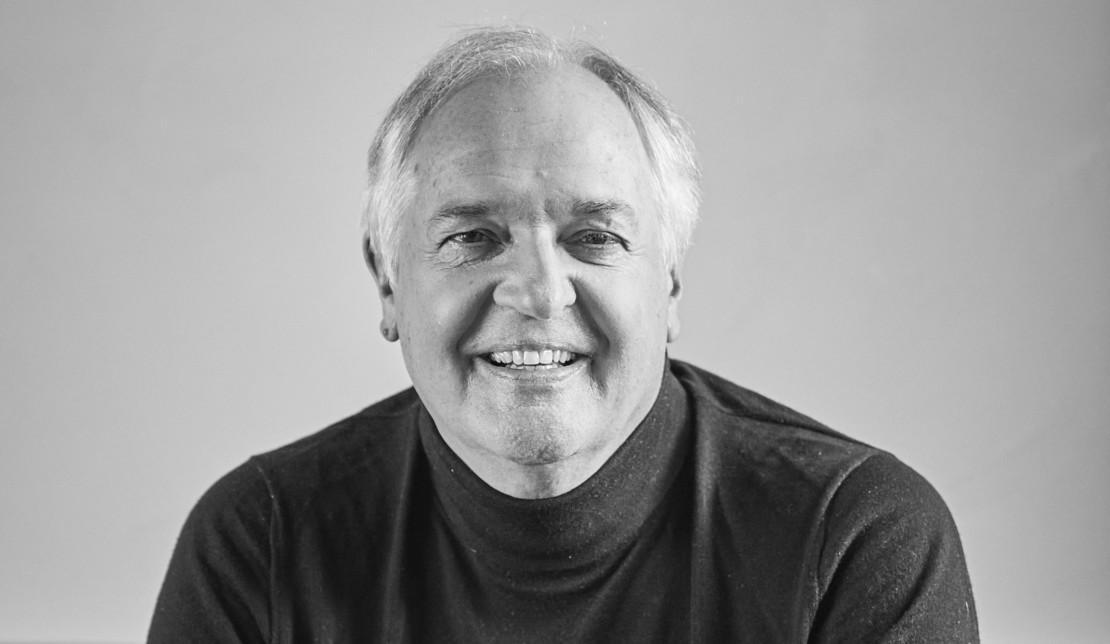24Jan2022
Paul Polman’s advice to companies who want to thrive in business while making the world a better place
With corporate social responsibility as a pretty much worn-out phrase in mission statements and strategic plans, organizations are slowly losing touch with how they could implement the principles of sustainability without their businesses suffering overwhelmingly. While agreeing with the ideology of responsibility is self-evident, turning it into a tool for success remains a mystery for many.
Not so with Paul Polman, a former CEO of Unilever and one of today’s most followed business leaders and sough-after speakers. He helps businesses eradicate poverty and inequality, stem runaway climate change – and be profitable at the same time.
In the midst of the aftermath of his book Net Positive: How Courageous Companies Thrive by Giving More Than They Take being published, Paul Polman took the time to thoroughly answer some questions the readers of Nordic Business Report must be wrestling with in their respective quests to balance the two aspects of business – profitability and responsibility – that many have deemed contradictory already before even seriously trying to fit them into business plans.

It is easy for every leader to agree with the overall idea behind a company becoming net-positive. However, that is often where it all ends as no action follows. What are, in your opinion, the biggest hurdles that must be overcome at that moment when words should be turned to action?
It’s true that many business leaders are convinced of the “why” but still struggle with the “how”. I chair the UN Global Compact for Secretary General Guterres and when we surveyed CEOs nearly three quarters said they feel increasing pressure to act on climate change, for instance, but many are struggling to accelerate their plans.
The easiest thing is to point to examples of corporate inaction and say business doesn’t care, but I don’t believe doing so gives the full picture or is indeed helpful. There is growing momentum towards a more responsible private sector, but transition is complex and difficult, and it will now take a continuous, collaborative effort to accelerate the shift. This is why Net Positive is deliberately a practical guide, a “how-to”, drawing on our experiences at Unilever and at leading firms around the world.
Each company will face its own specific challenges, and we often see barriers at both the macro and micro levels. At the macro level, the challenge is stepping away from the comfort zone of incremental CSR to embrace systems change. Working to change the systems in which your company operates, and not just your internal structures, requires companies to think bigger and partner with others in a way many never have, for instance if you are a food company helping drive the shift towards regenerative agriculture or a large firm using its influence to get money out of politics and strengthen democracy.
At the micro level, the challenges are ultimately personal. How much do you care? Are you willing, as a leader, to do uncomfortable things? Do you have the courage to admit when you don’t have the answer, and will you be consistent and open in everything you do?
This last part is especially difficult, but especially important. There is no point having a fantastic carbon target if you fund organizations which deny climate change. There’s no point promising more women on your Board if your trade association is lobbying against equalities legislation. Increasingly everyone, from employees, to customers to investors, expect CEOs to embody their company’s values and apply them in everything they do. Those who pick and choose are rightly being called out.
The net-positive approach is about forming transformative coalitions to do good things that will, eventually, pay off also financially. However, many business leaders find themselves in situations where the board and stakeholders scream for faster return on investment and every fiscal year should show a bigger profit than the previous one. What tools do leaders have to convince everyone that good things come to those who have the patience to wait?
Most investors actually want long term returns and ideally delivered consistently. Most investments also have a 3-5-year horizon before they pay out or longer. Investors understand this. It is increasingly apparent, also among the bulk of the financial community, that a long term multistakeholder model also gives higher returns to shareholders. Larry Fink’s latest letter is just a small but important example of that.
The key is creating the right environment to drive long-term behavior, in the face of pressures from the market and often your Board. At Unilever we deliberately launched the Sustainable Living Plan with a ten-year horizon, to push for long-term thinking, and we abolished quarterly earnings guidance to remove the relentless pressure on the organization to perform on a ninety-day cycle.
We also committed our pension fund to align with the UN’s Principles for Responsible Investing, shifting the incentives for the fund managers to reward performance over the longer term, not the quarter. And we reformed the Board to support a multi-stakeholder model and improve diversity, which automatically helps move you away from the narrow, financial short-termism of conventional boards.
Not every company is Unilever, but every company can point to the growing evidence that more sustainable, multistakeholder, long-term business models pay. For example, mission-driven companies have 30% higher levels of innovation and 40% higher levels of employee retention according to research by Deloitte. The JUST Capital 100—a list of companies ranked highly on purpose and serving society—produced 56% higher total shareholder returns over five years. And every company has available to it, to differing degrees, five levers that can help drive long-term performance: governance, pay and incentives, the way you engage your investors, the timelines you set for your strategies, and your metrics. What gets measured gets managed, so aligning your metrics to longer time horizons is crucial.
Transformative partnerships emphasize the essence of outside-in perspective to understand the constraints and limits of the world – and adjust their strategies accordingly. Yet, companies tend to concentrate on their inner strengths and capabilities – because that is what their mission states, and that’s what they are good at. For the sake of coalitions that can work along the supply chain towards larger scale benefits and genuine net-positivity, how far away from its core competencies can one company afford to drift?
You’re not drifting away from your core competencies when you are working on issues that you are uniquely placed to lead on. When Unilever partnered with Nestle, Coke and others to get harmful gases out of all our refrigerators, we were well placed to do so precisely because we and our peers had an interest in collaborating on a successful reform that would prove environmentally beneficial and commercially viable.
Put it another way: do you want others who don’t understand your business as well as you do design these changes without you? If you are in food, you want a place at the table when the issue is regenerative agriculture. Same if you are a tech company and its about regulation to protect human rights online.
I agree partnership isn’t automatic to all business leaders – this isn’t what they prepare you for through the modern MBA which, by the way, also needs to change. But if collaboration isn’t a core competency, it is in your company’s clear interest to make it one. Hire people who do it well. Get your leaders the mentoring, training and support they need. If the choice is actively driving the discussion or being left out of it – or being left with a status quo which is unsustainable and serves no one, it’s clear which makes most business sense.
The book goes into the How of developing effective partnerships within your supply chain and with other industry partners (“1+1= 11”) as well as the more transformative partnerships to drive the broader systems change (“Takes three to tango”). As the old African proverb says, alone you can go fast, together you can go further.
After reading this article it should be evident that a spark will ignite in many leaders’ minds, and they decide to start exploring the opportunities of net-positivity for real. For the leaders that become convinced about net-positivity being the right way to go, what would you advise them to do first?
Rumi the 13th century poet said it well. “Yesterday I was smart, I wanted to change the world. Today I am wise, I want to change myself.” That’s where any journey starts. With the book it’s above all about a mindset change. We are surpassing many planetary boundaries and less bad or CSR is simply not good enough anymore. The only acceptable way to think is restorative, regenerative, reparative which we call Net Positive. How companies can profit from solving the world’s problems, not creating them.
You have to start with yourself and with personal leadership. Transformation occurs at three levels, working up from the personal, to the organizational, to the systems level. We can only transform the systems that shape our world by transforming the organizations within it. And we can only transform organizations by helping the people within them find their true purpose, beginning with ourselves.
This personal leadership journey starts with listening – to your people, communities, suppliers, trusted peers and so on. Be open, humble, and questioning. Stop thinking that you’ll hear about problems in the company because, if they are big enough, they’ll eventually land on your desk. Start actively going out and finding out what’s going on among your stakeholders and in the business. You will almost certainly find some things which surprise you.
Then, whatever it is, you have to own it. You have to take responsibility for all the consequences and impacts of your business, not just the obvious ones. This is a big mindset shift, and its game changing. Be honest about where you are in your Net Positive journey: there’s no shame in being at the beginning if you are committed to powering ahead. And look for the bad habits and blockages – including people – who are obstructing ambition and holistic thinking, and who are fighting for their own self-interest even though it is holding the company back. Try to bring them on board and, if you really can’t, promote and work with others who understand the mission.
Once all this is in place, you are ready to start making real changes in how the company is run and the part it plays in the wider world.


